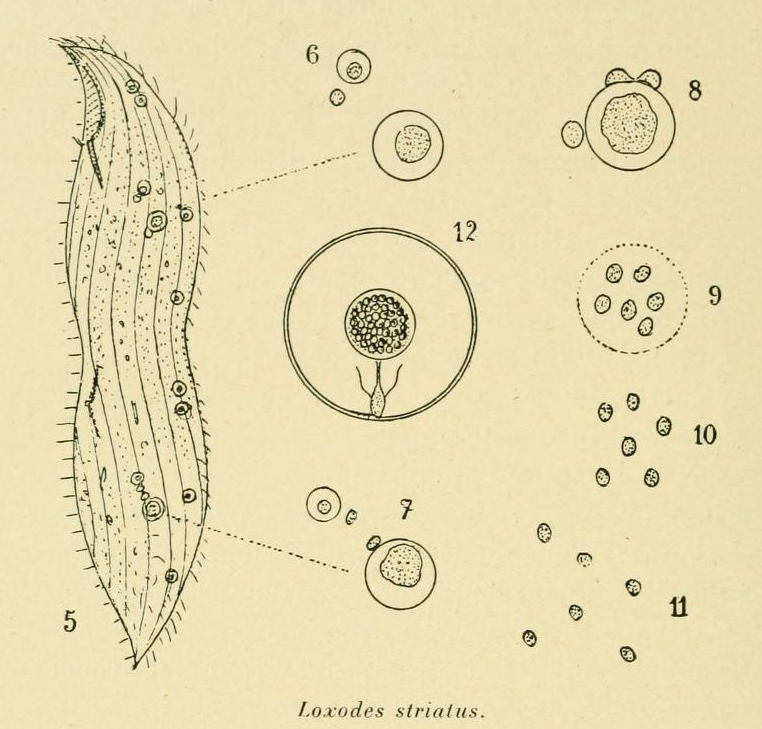|
Loxodida
Loxodida is an order of karyorelict ciliates. The term ''Loxodida'' derives from the ancient greek Ancient Greek includes the forms of the Greek language used in ancient Greece and the ancient world from around 1500 BC to 300 BC. It is often roughly divided into the following periods: Mycenaean Greek (), Dark Ages (), the Archaic peri ... (), meaning "oblique, tilted". References External links * {{Taxonbar, from=Q18573102 Karyorelictea Ciliate orders ... [...More Info...] [...Related Items...] OR: [Wikipedia] [Google] [Baidu] |
Loxodidae
Loxodidae is a family of karyorelict ciliates. Loxodidae members possess an elongated, laterally flattened shape. They share two key characters: a beak-like anterior rostrum interrupting the perioral kineties, and peculiar cytoplasmic organelles named Müller vesicles. The extensive development of lacunae of the smooth endoplasmic reticulum leads to strong vacuolization of the endoplasm. This feature is associated to a lack of contractile vacuoles in all loxodids. The term ''Loxodidae'' derives from the ancient Greek (), meaning "oblique, tilted". Gravitaxis Loxodidae members possess the ability to orient themselves in oxygen gradients. They use gravity as a stimulus for this spatial orientation, a phenomenon called gravitaxis or geotaxis. Loxodid ciliates must therefore have developed mechanoreceptors informing them about what is up or down. A likely candidate structure for their gravitaxis is the Müller vesicle. Müller vesicle Müller vesicles (also known as Müller ... [...More Info...] [...Related Items...] OR: [Wikipedia] [Google] [Baidu] |
Karyorelictea
Karyorelictea is a class of ciliates in the subphylum Postciliodesmatophora. Most species are members of the microbenthos community, that is, microscopic organisms found in the marine interstitial habitat, though one genus, ''Loxodes'', is found in freshwater. The majority of karyorelict taxa have not been cultivated in the laboratory, although clonal lines of ''Loxodes'' have been developed. Systematics According to Lynn (2008), the Karyorelictea class is divided into three orders: * Loxodida, containing the families Cryptopharyngidae and Loxodidae; * Protoheterotrichida, containing the families Aveliidae and Geleiidae; * Protostomatida, containing the families Kentrophoridae and Trachelocercidae. These three orders were defined morphologically, and have been confirmed with molecular phylogenetics. An additional family, Wilbertomorphidae, is of uncertain affiliation and has not been assigned to an order. Nuclear dimorphism All ciliates, including karyorelicteans, p ... [...More Info...] [...Related Items...] OR: [Wikipedia] [Google] [Baidu] |
Ancient Greek
Ancient Greek includes the forms of the Greek language used in ancient Greece and the ancient world from around 1500 BC to 300 BC. It is often roughly divided into the following periods: Mycenaean Greek (), Dark Ages (), the Archaic period (), and the Classical period (). Ancient Greek was the language of Homer and of fifth-century Athenian historians, playwrights, and philosophers. It has contributed many words to English vocabulary and has been a standard subject of study in educational institutions of the Western world since the Renaissance. This article primarily contains information about the Epic and Classical periods of the language. From the Hellenistic period (), Ancient Greek was followed by Koine Greek, which is regarded as a separate historical stage, although its earliest form closely resembles Attic Greek and its latest form approaches Medieval Greek. There were several regional dialects of Ancient Greek, of which Attic Greek developed into Koine. Dia ... [...More Info...] [...Related Items...] OR: [Wikipedia] [Google] [Baidu] |
